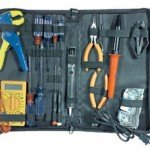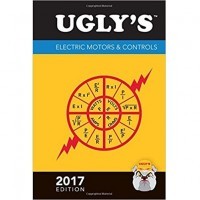Control panel troubleshooting can be done efficiently if you take your time. This sounds wrong because when you’re troubleshooting a control panel you’re usually in a production environment and need to fix the problem quickly. Plan your assault. Don’t waste time or effort. Find the shortest path to the solution. Here are the basics.
1 • Ask for help
Before you start doing anything see if someone can help you. Sometimes you get lucky. Talk with anyone who knows anything about the control panel or the equipment it’s controlling. Call the equipment manufacturer. You’re looking for anyone who knows how the control panel is supposed to work.
If you get lucky, you’ll find someone who’s seen the problem before. See if they know how to fix it, how it was fixed last, or who fixed it last.
If you get real lucky, you find someone who knows the panel and how it works. See if they know when the problem started like after someone did something, or after something happened.
If there’s no one to help you, keep going. Don’t waste time or effort. Investigate the simplest potential problem first, next simplest, repeat.
2 • Use your resources
DOCUMENTATION – Find the documentation that was originally included with the control panel as shipped. Control panels generally include installation and operating instructions. Electrical schematic drawings are helpful. If you can’t find the documentation call the manufacturer to get a copy.
TOOLS – Experienced troubleshooters accumulate tools. If you’re new you’ll need to start accumulating tools. At a minimum you’ll need
- An Electrical multi-meter to test for Voltage and Resistance
- Screwdrivers to loosen and tighten wire terminal connections
- Wire Cutters, Strippers, Connectors, Electrical Tape to repair wiring
If you’re new and want to learn about electrical controls you can find local and on-line classes in your field, but experience is the best teacher.
A great Electrical Reference Book is Ugly’s Electric Motors And Controls.
3 • Focus your efforts
The old adage is still true. If it ain’t broke don’t fix it. Focus on the problem you’re trying to solve. Let the problem lead you to the solution. The questions are what you trying to figure out and what are you trying to fix.
- What are you trying to figure out ?
- Why the control panel isn’t working at all, or
- Why some aspect the control panel isn’t working properly ?
- What are you trying to fix ?
- Is it a power problem, or
- Is it a control problem ?
Find the dedicated power source feeding the control panel before you start doing anything. It’s usually a dedicated circuit breaker in an Electrical Power Distribution Panel or Motor Control Center. Find it and Turn it Off, then locate any field devices connected to the panel. If you’re not sure where to start, start with the power circuits.
4 • Troubleshoot the circuits
Locate the incoming power connection and any outgoing power connections. Let what you see guide you where to start, but generally start with the incoming power connection and trace each (suspect) power circuit’s power wires through its power components (circuit breakers, contactors, etc.) to its final destination (motor, heater, etc.)
- Use your Multi-meter to test for voltage (to insure the power is off).
- Look at each power connection and its wiring. Does anything look unusual ?
- Look at the power components ? Does anything look unusual ? Is the circuit breaker off ?
- Try to move the wires and connections with your hand. Does anything look or feel unusual ?
- When you find an obvious problem, fix it or have it fixed, turn the power back on, and see if you’re done.
- If you’re not done, repeat 2 through 5 until you’re done or decide you need help.
5 • Verify everything works as desired
Get someone who knows how the control panel operates to help you verify everything works as desired.
- Function test what you fixed to verify it now works as desired.
- When what you fixed works as desired make sure your fix didn’t break something else.
- Function test everything to verify everything works as desired.
- If something isn’t working properly, return to Step 3




